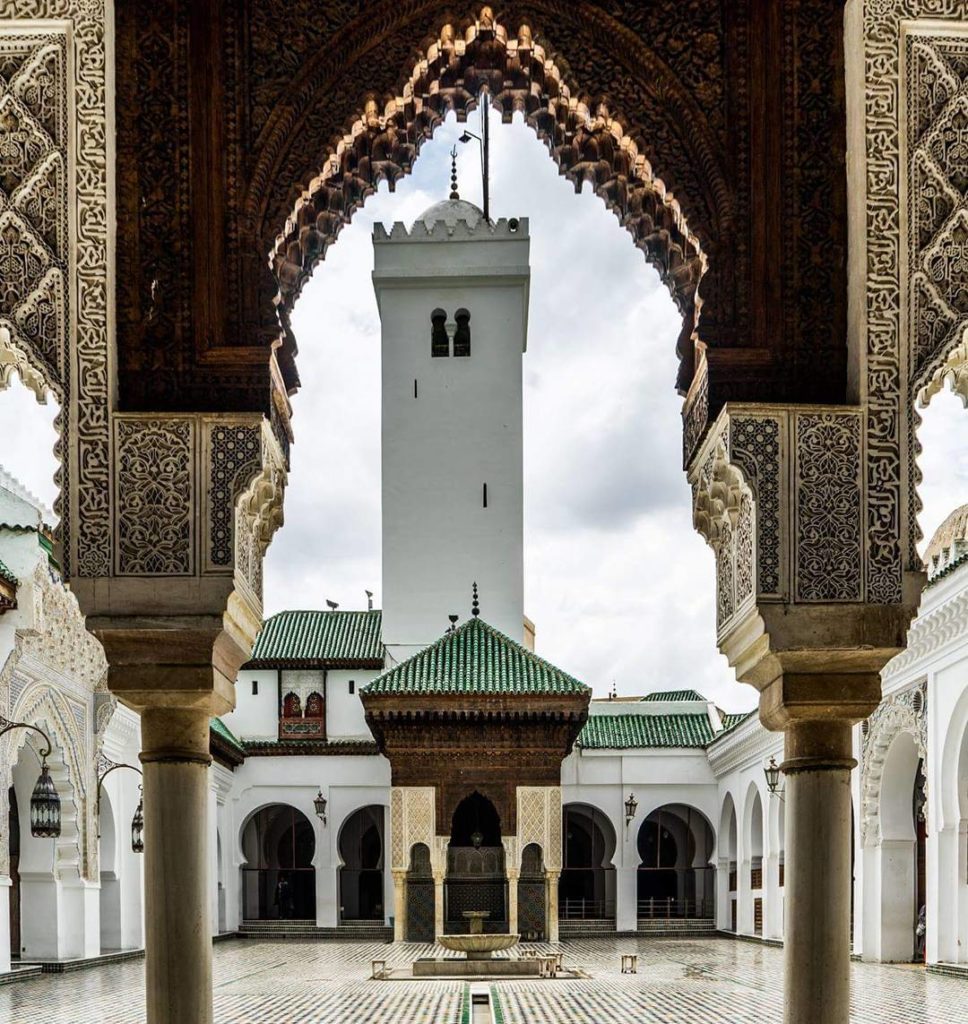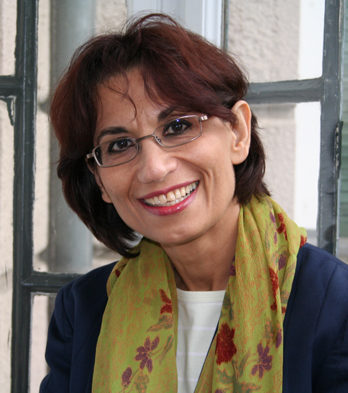
The early nineties of the twentieth century witnessed the emergence of a global feminist and Islamic movement at one and the same time. This trend aims to refute the conservative view and discriminatory legislation against women.
IT STRIVES TO OVERCOME the paradoxes and apparent contradictions between Islam on the one hand and gender equality on the other hand, and has various names: ‘gender jihad’ or ‘feminist Islam’ or ‘Islamic feminism’ or ‘The Islamic women’s movement,’ as the Islamic thinker Heba Raouf Azza calls it.
There are also many women’s writings in the Arab world that criticize the prevailing religious discourse, and we can mention, for example, the works of Fatima Mernissi, Nawal Al-Saadawi and others.
In this context, feminist Islam emerged in the late nineties of the last century. It is not known exactly where the term ‘Islamic feminism’ originated, but there are indications that it appeared in Turkey, with Nilufer Gül’s book Forbidden Modernity published in 1999.
We should define what we mean by this term, which suffers from some opacity and lack of clarity.
It is interesting to note that many analysts oppose the use of this term – they reject this link between feminism and Islam due to the different documentary records, the different intellectual references and the heterogeneity of the two terms.
Muslim women in the diaspora are defending their gains made under systems of government that have recognized the value of full citizenship
We actually see various forms of feminist Islam, in that forms of this new awareness differ according to the political, social and economic context, something which has resulted in the emergence of many currents. But it is nevertheless agreed today that a group of feminists, most of them secular academics living in the West, are in recent years using the term ‘Islamic feminism’ to refer to Islamic alternatives to Western feminist movements. They consider Islam to be the royal, authentic road to achieving equality and justice between the sexes.
So what are the factors for the emergence of these movements, what are their mechanisms of action, and what are the challenges they face today?
Several subjective and objective factors have contributed to the emergence of feminist Islam, just as several considerations, including political, ideological and cultural considerations, led to the emergence of the movement. All of these considerations differed according to each country. Among these factors we may mention the following:
The tyranny of modernity and postmodern values – The human being of modernity is an abstract legal entity that transcends racial and sexual specificities. All individuals are equal before the law. With the post-modern climate the interest in privacy increased, along with a demand for respect for identities and cultures. The followers of the movement observe that Muslim women in the diaspora that support Islamic feminism are defending their rights to expression, thought and belief, and defending their gains made under systems of government that have recognized the value of full citizenship and allowed freedom of opinion, thought and organization.
The decline of women’s illiteracy and of women’s schooling – their entry into the labour market, and their penetration of the walls of knowledge, especially religious knowledge hitherto monopolized by males.
The growth of currents of political Islam – their success in attracting women, and the emergence of a new generation of Islamic activists who cling to the gains of modernity, despite this generation’s skepticism on the women’s liberation movement, noting its failure to address women’s rights and activate their position in the family and society.
Awareness of the need to confront militant fundamentalism (especially following the success of Khomeinism in Iran and the Taliban takeover in Afghanistan) through a feminist movement that can express a tolerant Islam that honours women and does not denigrate them. Contemporary history shows us that Iranian feminism emerged, for example, through the attempts of Iranian women to improve Islamic gender relations within the framework of the religious state, and mainly by pressing for legal reform within the framework of the Islamic Republic.
Ziba Mir Hossein considers this movement the ‘unwanted son’ of political Islam, as the chasm separating the latter from human rights has spurred the rise of the Islamic women’s movement. This young movement has criticized the patriarchal reading of Islam that confuses Sharī‘a with the patriarchal system and seeks to impose laws in the name of Islam by adopting traditional and outmoded legal texts.
This young movement has criticized the patriarchal reading of Islam that confuses Sharī‘a with the patriarchal system
In the same context some women in South Africa, for example, joined anti-racial struggles and demanded movements calling for land reform. Women thus formed a new social force, and their demands for rights acted to destabilize the structures of domination and opened up possibilities of redistributing power in both the private and public spheres.
The crisis of the modernist project – the destabilization of the guiding standards on which it is based, the growing feelings of frustration and disappointment with the betrayal perpetrated by the West with its double standards, and the crisis of the capitalist system.
The fear of globalization and the dangers of cultural stereotypes – the phobia of profiling fuels complexes of threatened identities and the fear of dissolution and disintegration, and the narcissism of small differences emerges,as Sigmund Freud put it.
The female imagination – awareness of unequal gender relations in ‘Islamic’ societies dates back to a period prior to any encounter with Western feminism. In our collective imagination and in our cultural memory there exists a rich historical and anthropological stock that supports feminist arguments in Islam, since an acute female consciousness has existed ever since the origins of Islam. Islamic law, for instance, recognized equality between men and women: the Holy Qur’an says And they (women) have rights similar to those (of men) over them in kindness,[1] while the Prophet emphasized this equality by saying: “Women are the sisters of men.”[2]
In addition to the principle of equality, Islamic Sharī‘a recognised a woman’s full capacities:
- her full human capacity at the origin of creation;
- her legal capacity mandating upon her, like her male brother, all of its provisions;
- her civil capacity, in that it confirmed independent financial liability for her and granted her the right to own property, conclude contracts and enjoy the right to dispose of her wealth without the mediation of a guardian.
Works on the Prophet’s sira (biography) and history books are also replete with stories of Muslim women who participated in the founding and dissemination of Islam, as well as in establishing a feminist identity, women such as Khadija, Umm Salama, A’isha and Samra al-Asadiyya who was appointed by the Prophet to administer the hisbafunction over Mecca, and Al-Shifa Bint Sulayman, who assumed the position of Al-Hisb in the caliphate of ‘Umar Ibn Al-Khattab.
It is the mingling of the founding texts and jurisprudence that is the main source of tension between Islam’s vision of equality and the patriarchal context in which the Qur’an emerged
Collective memory preserved the accounts and biographies of prominent Muslim women, such as Sukayna bint al-Husayn bin Ali Ibn Abi Talib, who opened the first literary salon, Arwa al-Qayrawaniyya who refused polygamy and insisted on monogamy, Fatima al-Fihriyya who founded the al-Qarawiyyin mosque and university, and the jurist Asma bint Asad Ibn al-Furat. as well as the jurist Khadija, the daughter of Imam Sahn Ibn Sa‘id the standard-bearer of the Maliki school of thought in the Islamic Maghreb, along with the mother of Al-‘Alu, the lady of the battlefield and military planning who co-operated with her husband ‘Abdullah Al-Sunhaji in managing both public affairs and wars, and the Sufi A’isha Al-Manoubia, one of the Sufi luminaries of Tunisia.
We might also mention Qurrat al-Ayn, who joined the religious reform movement led by Sayyid Muhammad known as the ‘Bab’, a woman who used to lead men unveiled and called for limiting the authority of the clergy.
Who are the pioneers of the Islamic feminist movements today, and what are their demands?
The first indications of the trend appeared in Iran with the establishment of the reformist magazine Zanan in 1992 which played a foundational role in crystallizing feminist Islam or what some would call ‘feminist theology.’ Amina Wadud, a professor of Islamic studies at Virginia Commonwealth University, is considered the most famous in this field for two reasons: her call for the separation of the Qur’an and the hadith, and her leading of a joint prayer in New York in 2005.
Traditional jurisprudence famously does not allow women to lead men in prayer. Jamal al-Banna, the brother of the founder of the Muslim Brotherhood movement in Egypt, brought out a book entitled The permissibility of a woman to act as Imam before men as a response to the hostile reactions raised by Wadud and to confirm, secondly, the right of women to the minor imamate. Contemporary academic researchers such as Laila Ahmed (1992), Aziza al-Habri (1982), Asma Belras (2006), Refaat Hassan (1996) and Fatima Mernissi (1991) have authored precise works of research and launched new efforts to reconcile the feminist movement with Islam.
Zainah Anwar, Executive Director of Sisters in Islam, a Malaysian organization working for women’s rights within the framework of Islamic action, notes that:
In our societies men have the power and they decide what Islam should mean and how we can obey a particular concept in Islam … But I cannot live with an unjust God. The law itself is progressive but the men who control it are not.
Amani Saleh in her book Towards an Islamic Perspective on Feminist Knowledge believes that justice for women revolves around separating human history from the foundational Islamic texts.
The well-known researcher Margo Badran defines feminist Islam as something that transcends the antagonistic dualisms of West and East, public and private, religious and secular, and also calls for the imposition of a strong interaction and integration between the religious and the secular in the long journey towards equality. Badran believes that Islam is the only religion that acknowledges an ontological equality between women and men in its use of the term insan (‘human’) in the Qur’anic text, but that this message has since become distorted. She believes that this new movement will play an important role, as she puts it, in “reviewing Islam, creating a new modernity, and changing feminism itself”.

Suggested Reading
Ziba Mir-Hosseini is one of the most well-known Iranian scholars of Islamic feminism. She believes in a new, feminist vision in terms of its goals and demands, but one that is Islamic in its language, roots and legitimacy. Ziba in her research believes that the Islamic women’s movement faces a set of discourses emanating from different locations. It faces the discourse of political Islam, which calls for a return to patriarchal texts and the establishment of an Islamic state.
It is also confronted with a traditional Islamic discourse that considers jurisprudence as some sort of sacred text that should not be delved into; it is also faced with a fundamentalist fundamentalist discourse that sees religion as inherently unjust and excludes the possibility of achieving a liberal or feminist reading of the faith; it also faces a western discourse that is critical of Islam and also a discourse of the dominant western feminist movement which argues for the necessity of secularizing its proponents.
Ziba Mir Hosseini believes that it is the mingling of the founding texts and jurisprudence, that is, between the sacred and the human, that is the main source of tension resulting from Islam’s vision of equality and the patriarchal context in which the Qur’an emerged, in addition to the tensions caused by a literal reading of the Qur’an and a rigid Islamic interpretation of it.
[1] Qur’an II (al-Baqara), 228.
[2] E.g.: Sunan Abi Dawud 236 .
Main image: Professor Amina Wadud leads a Friday prayer service in front of male worshippers in Oxford, England, on October 17, 2008.



